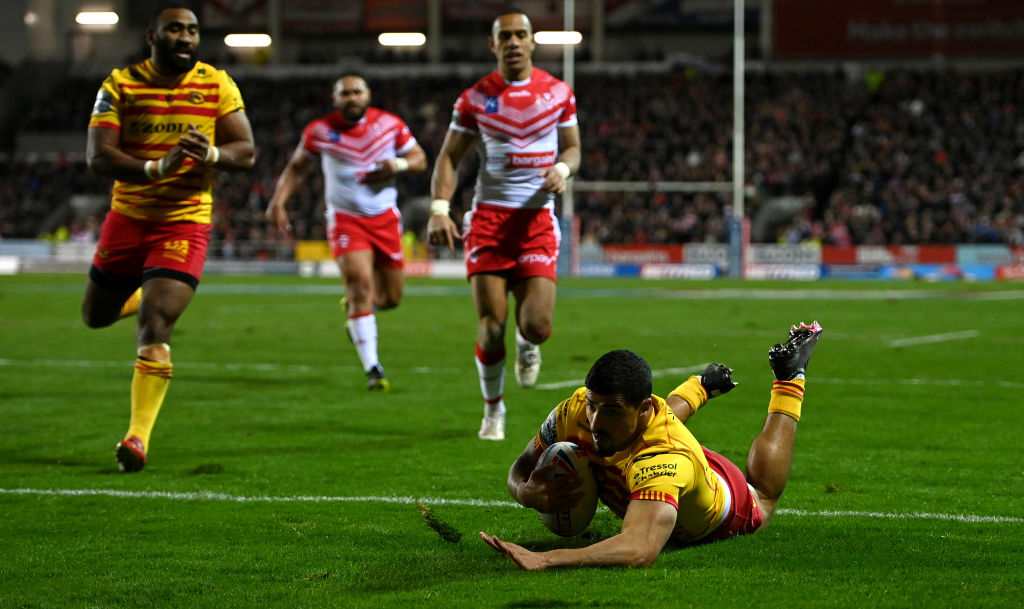Why sport is taking over terrestrial TV airwaves again

If you’ve turned on your subscription-free, Nadine Dorries-unfriendly, terrestrial TV recently you may have been transported back to a time when moustachioed behemoths like Dickie Davies and Des Lynam ruled the afternoon airwaves – for we again live in an era of live, free-to-air sport.
Of course, you may not have noticed. Sky and BT are home to league football, the disaster of the Ashes unfolded behind a paywall and Amazon is steadily taking hold of tennis outside of SW19. Football and tennis, as arguably the world’s biggest sports, can name their price and Test cricket, despite its battles, remains a subscriber driver.
Yet with the FA Cup and Six Nations now shared by BBC and ITV, and the Winter Olympics gaining blanket coverage regardless of Team GB’s lack of medals, you could have spent recent weekends watching free sport. All three competitions encapsulate the drama, belonging and human interest that only sport can create and, most importantly to broadcasters, audiences turn on in their droves.
These events form part of the “crown jewels” of sport which remain accessible for all, but other rights owners have spotted the opportunity and are moving some of their content back to free-to-air TV.
Premiership Rugby has partnered with ITV Sport, meaning that union fans can keep on watching beyond the Six Nations. And most surprising of all, Channel 4 is screening rugby league’s Super League, something synonymous with Sky Sports since it was launched. Leeds and Warrington’s nail-biting finish drew an audience of 750,000 earlier this month. Not bad for a Saturday lunchtime.
So, why are some sports offering their product for free at a time when we all seem happy to switch between Prime, Netflix and Disney+ for our non-sport entertainment?
Despite what some would have you believe, the main driver is not that sports leaders have all got their heads in the sand. Most have an eye on the future rather than just short-term finances, and realise that to grow, their competitions need to be visible to as many people as possible.
Women’s sport has been led by the mantra “if you can’t see it, you can’t be it”, and others are now thinking the same way. Whether they are kids, next-gen fans or traditional dyed-in-the-wool followers, you need them to be able to consume for free and feel part of the sport at some stage.
Love it or loathe it, The Hundred being on BBC has clearly had an influence. Cricket’s challenges are well documented, but you can’t argue with our national summer sport being on the BBC every night for a fortnight. The Women’s Sport Trust’s Futures Sport report found that, of The Hundred’s 4.9m viewers, 3.5m went on to watch other women’s sport. Terrestrial coverage can have a major domino effect.
There are cultural factors at play too. With the slow death of reality TV taking place, broadcasters are looking to fill the gap and sport is a ready-made alternative.
Further, the perception that today’s younger audiences only watch clips on YouTube is finally being undone. Not only has the BBC just done a deal with British Athletics, it has brought back youth-focused BBC Three as a terrestrial channel. Expect some sport content on there.
Finally, those entertainment subscription services may be helping free-to-air broadcasters by driving traffic their way. For some reason, we love watching sport documentaries on Netflix, but look elsewhere for the live action itself.
If one more Drive to Survive fan asks me if I saw the Formula 1 on Sunday, I’m going to cancel the licence fee the Culture Secretary appears to think I pay to Channel 4.
Matthew Fletcher-Jones is a director at sport and entertainment agency Cake.